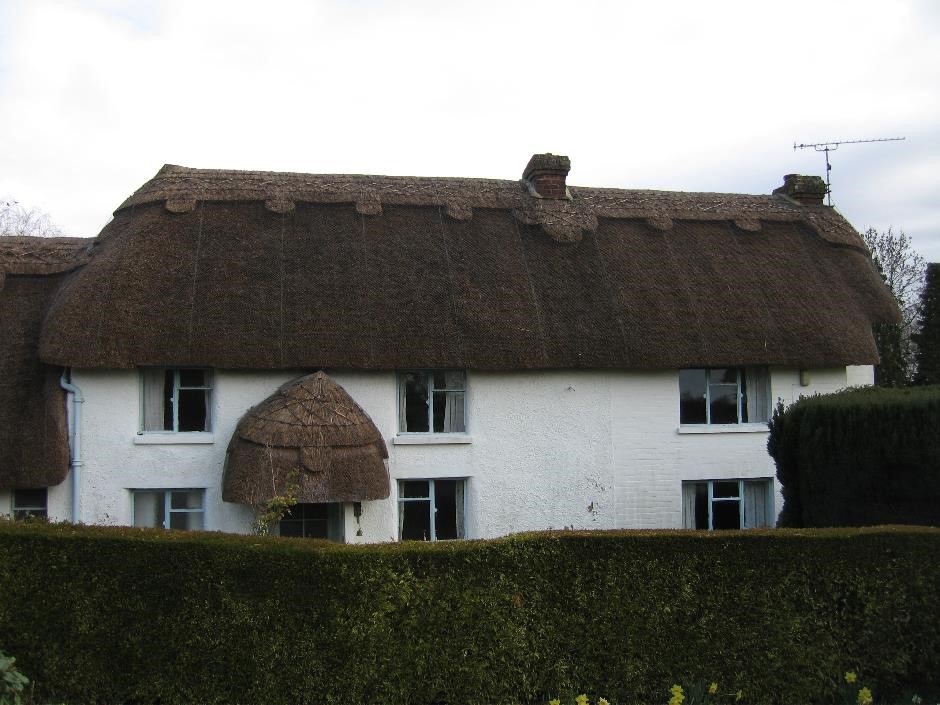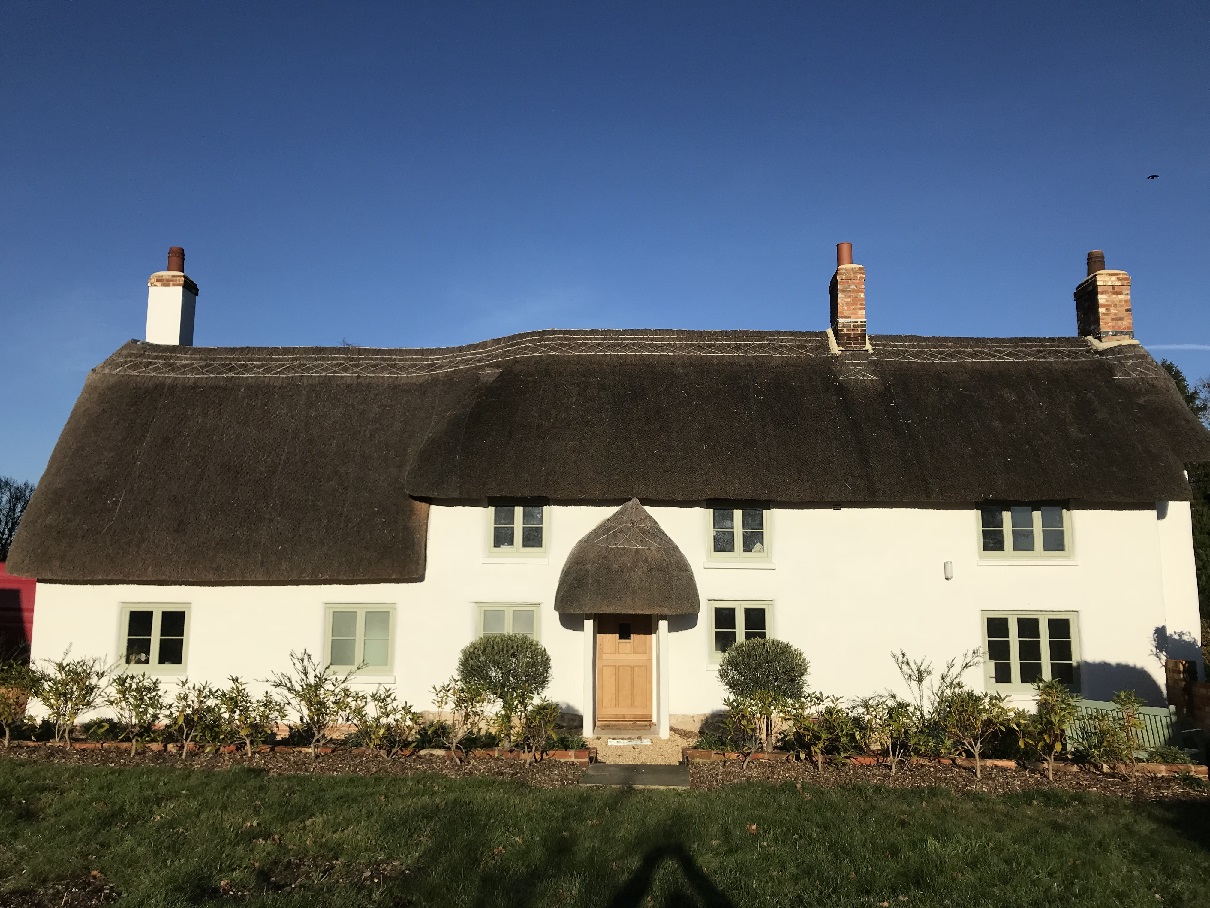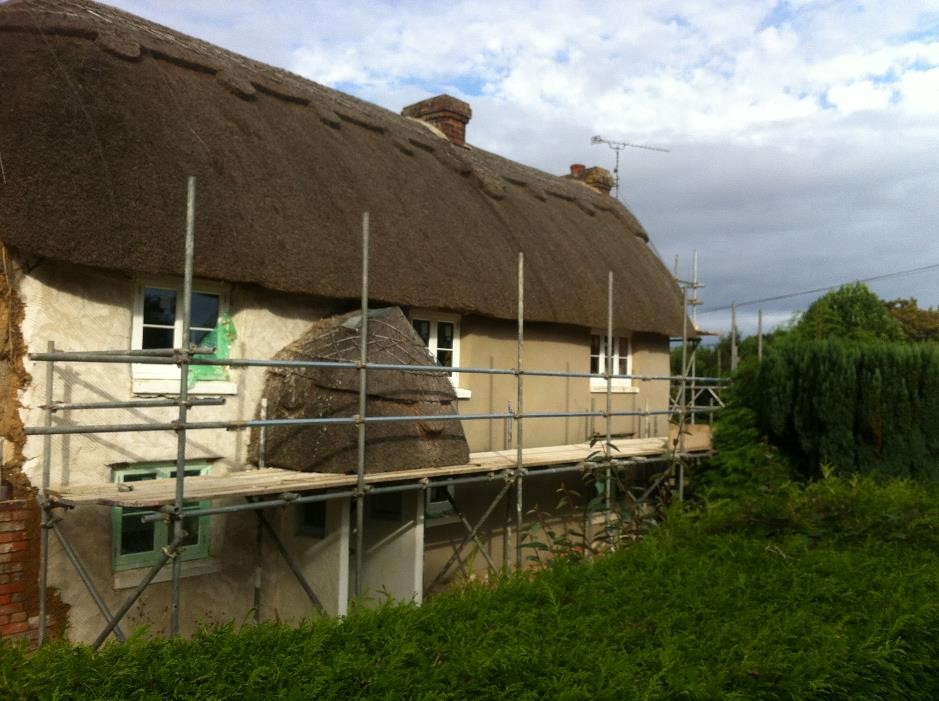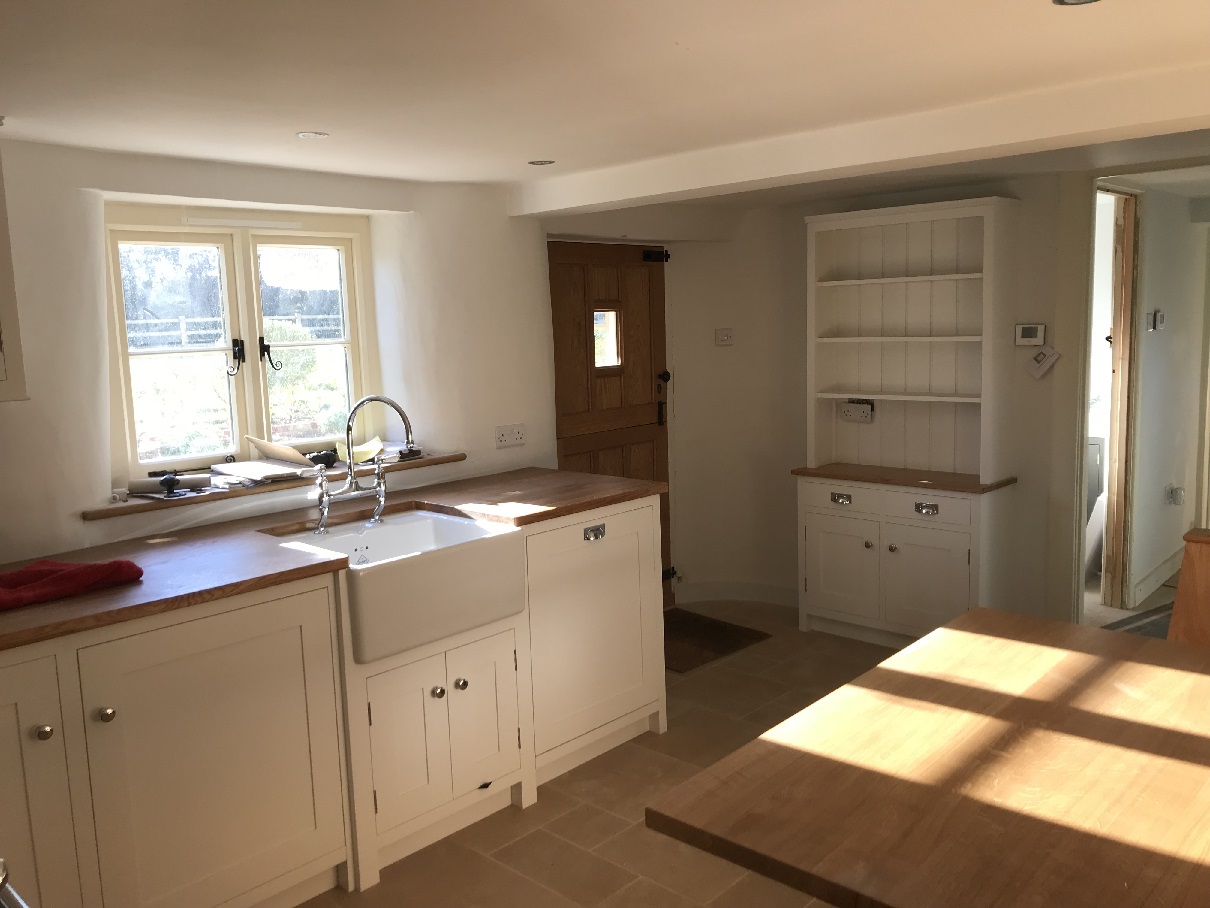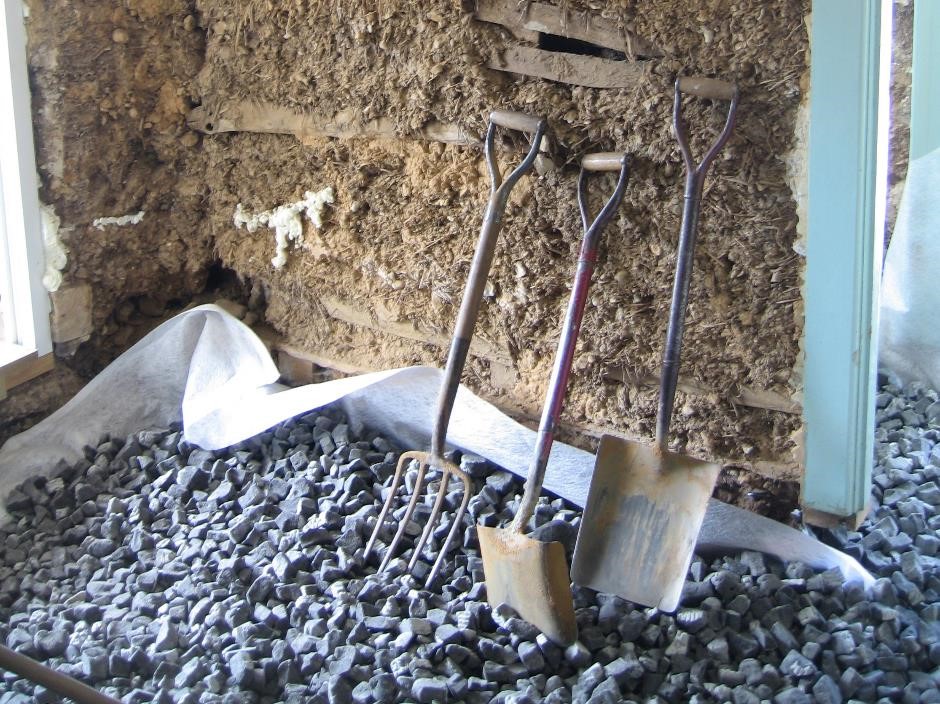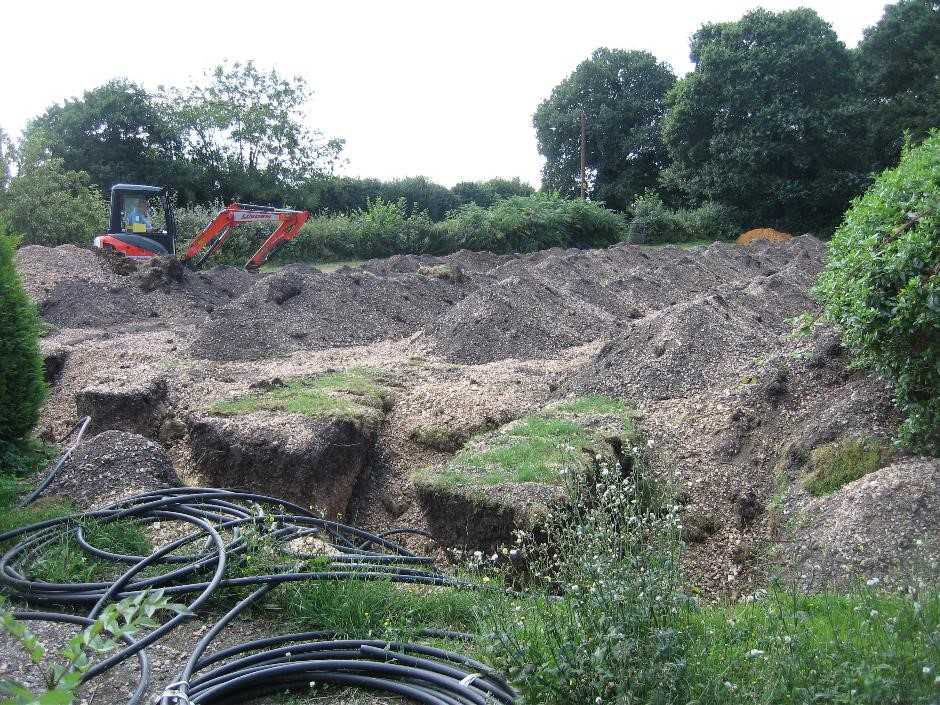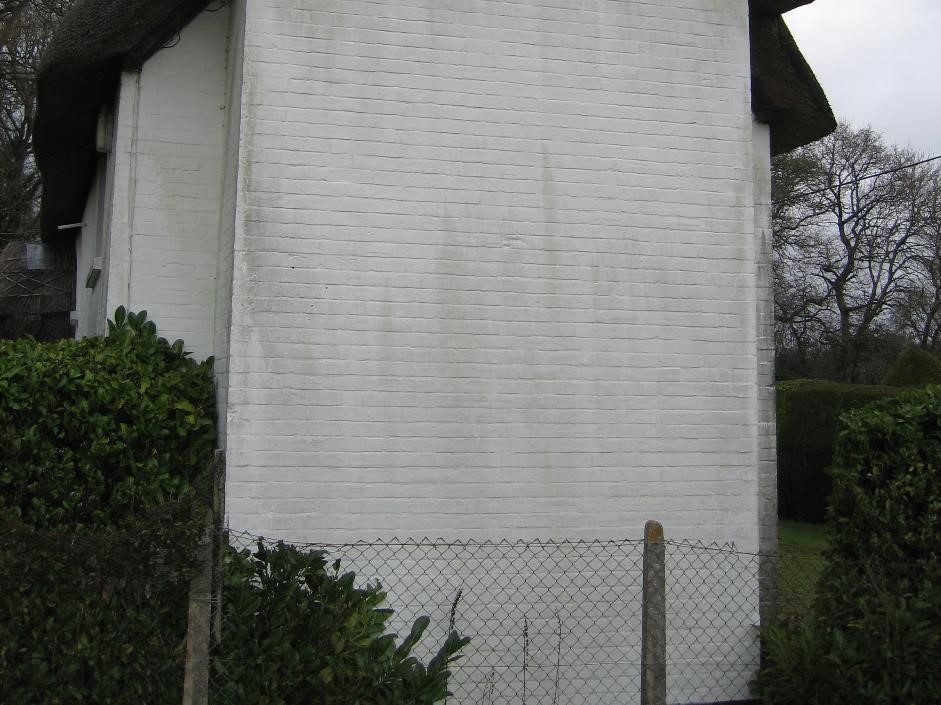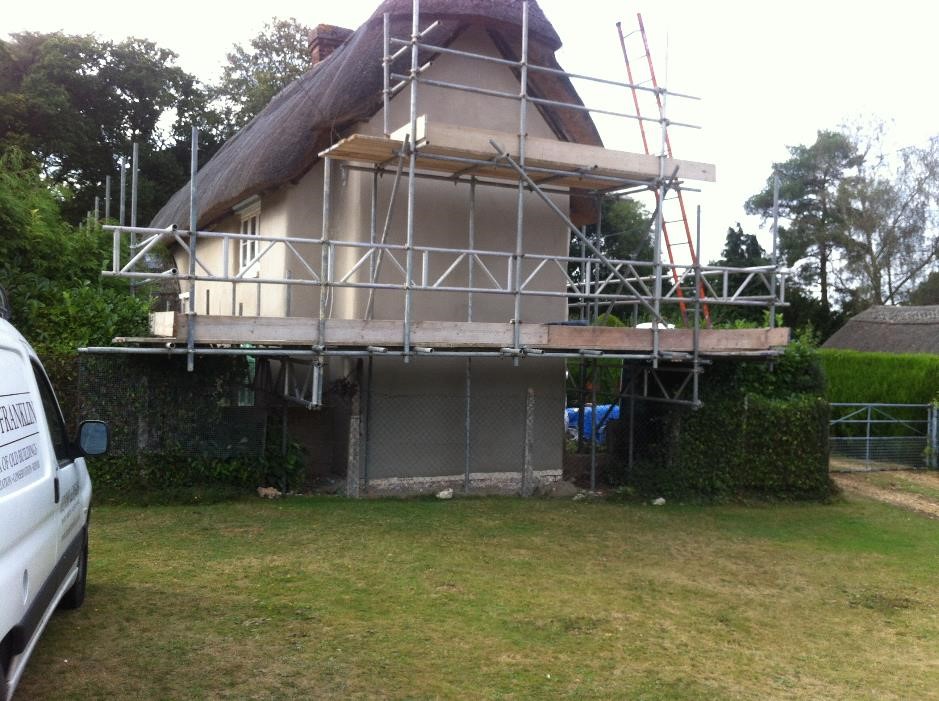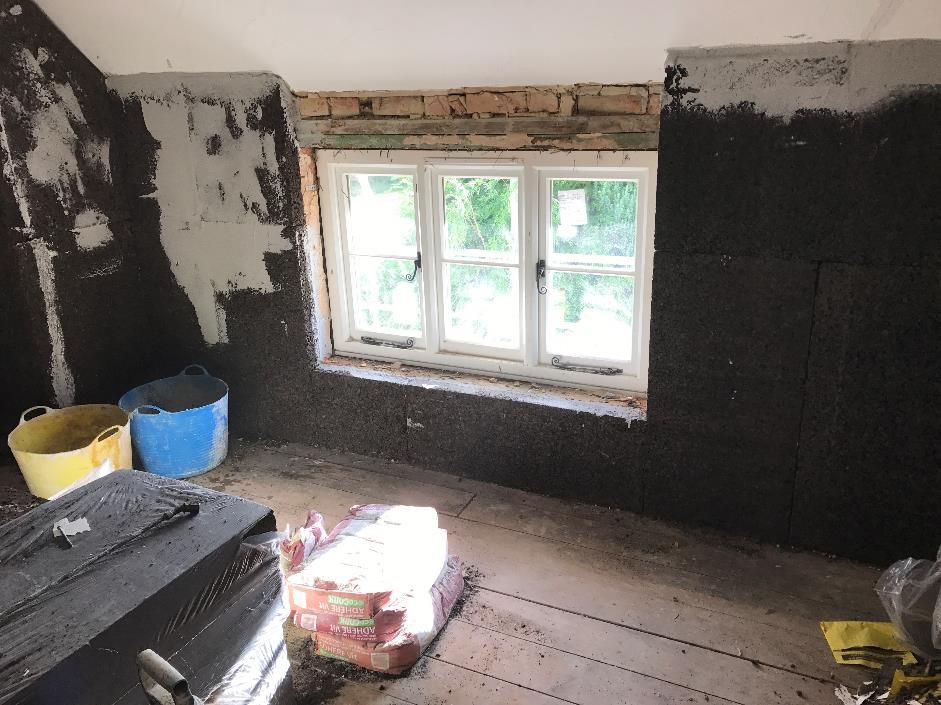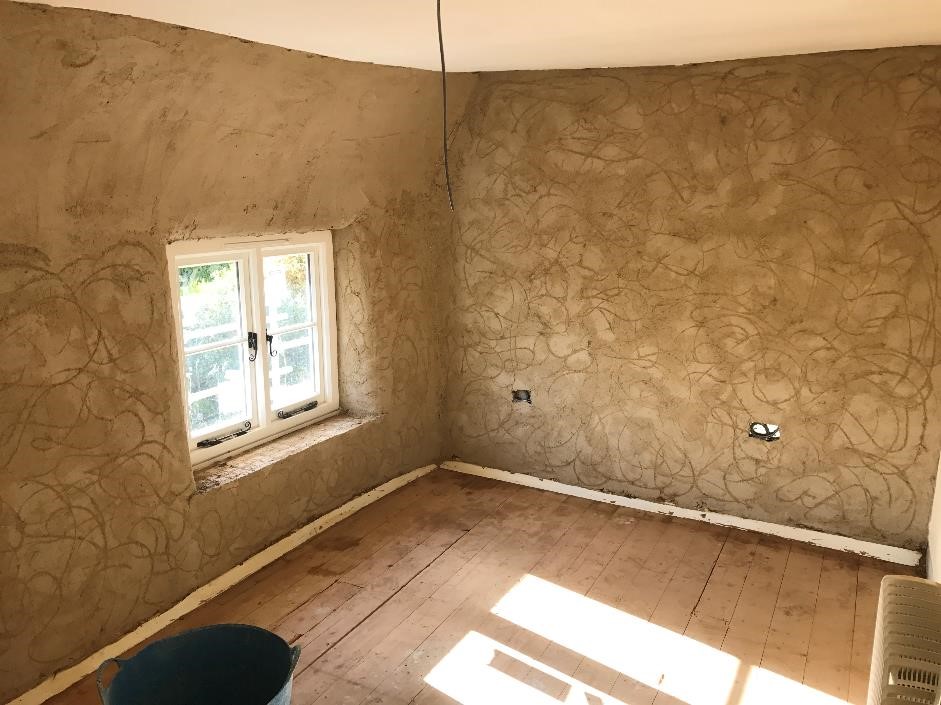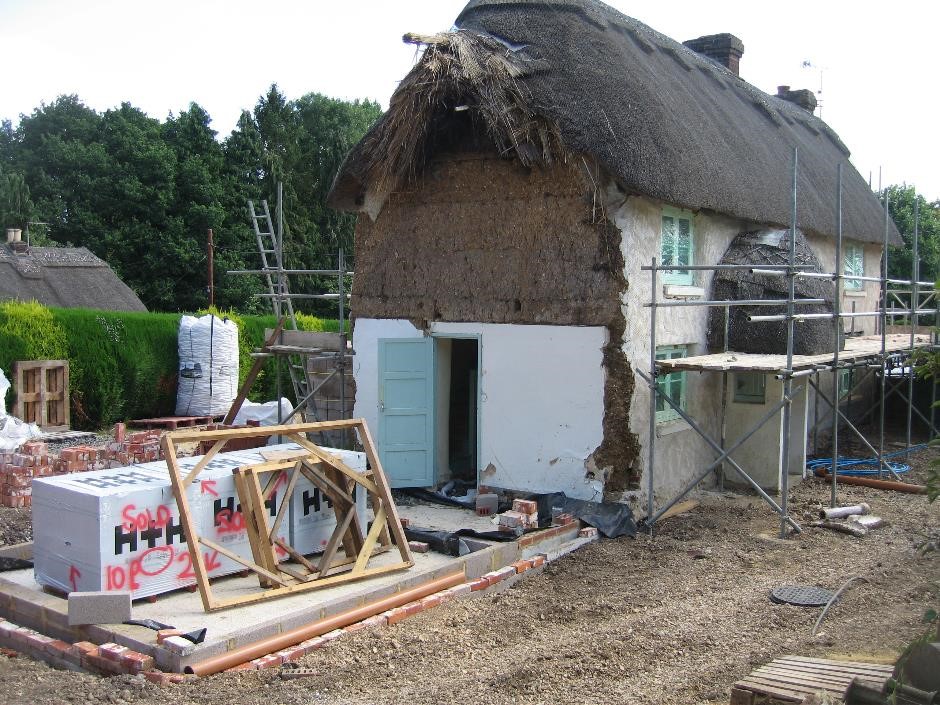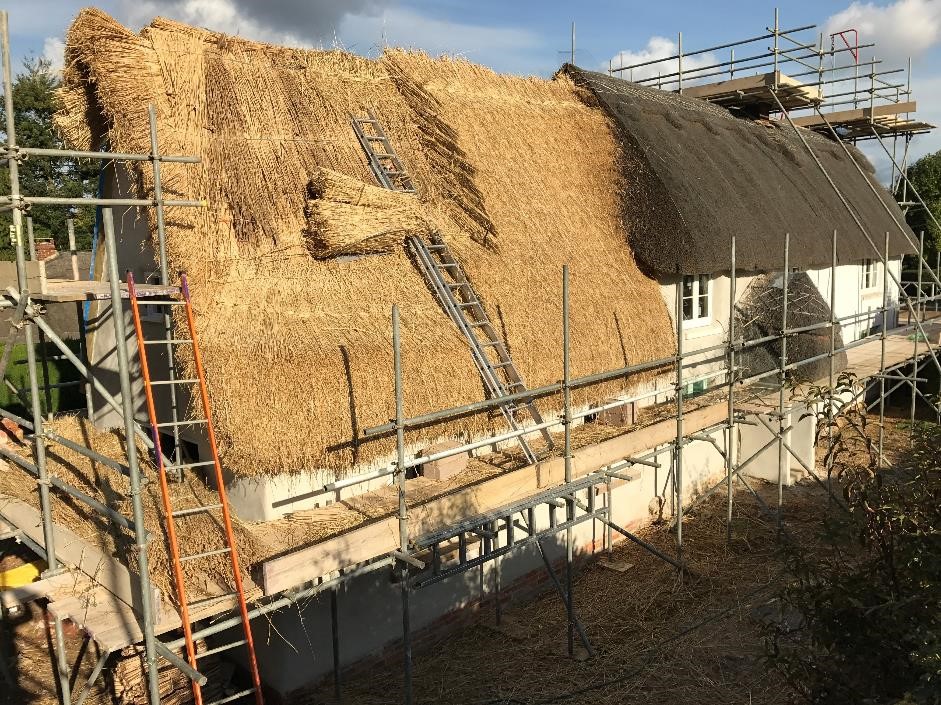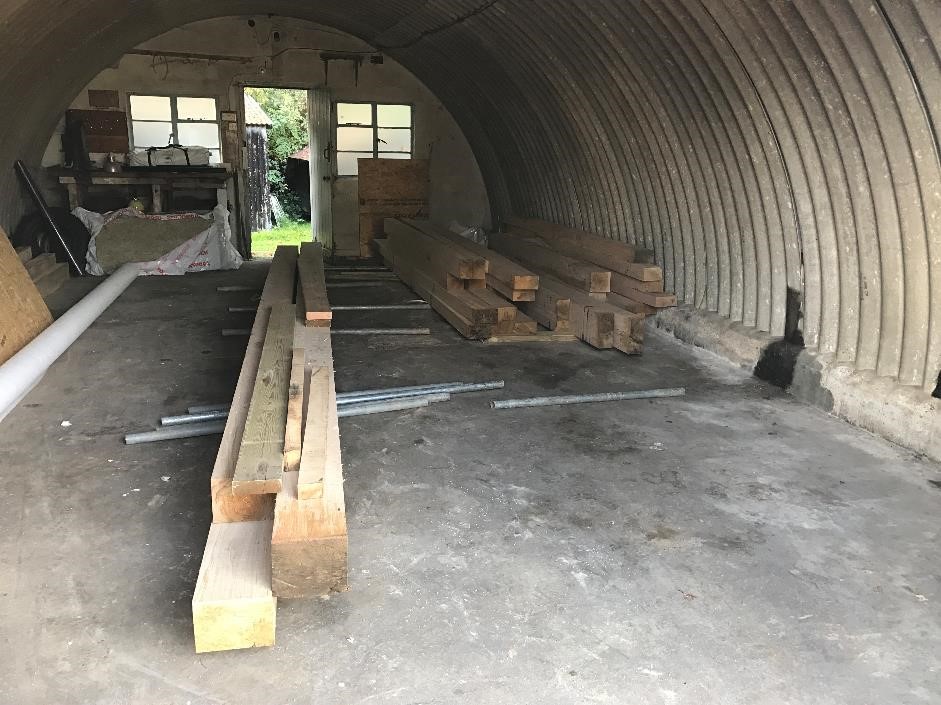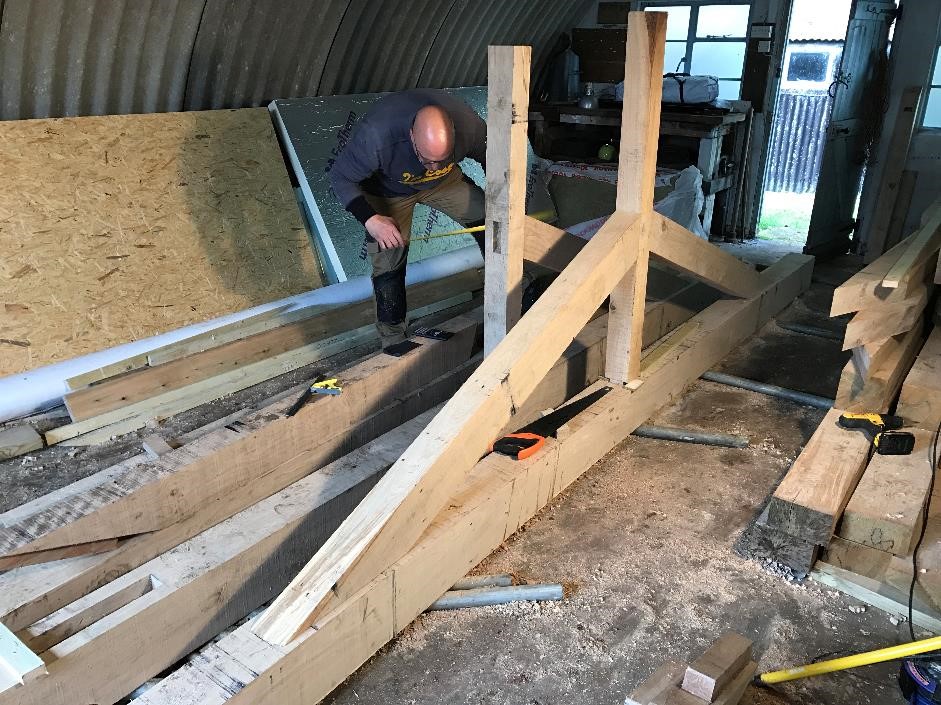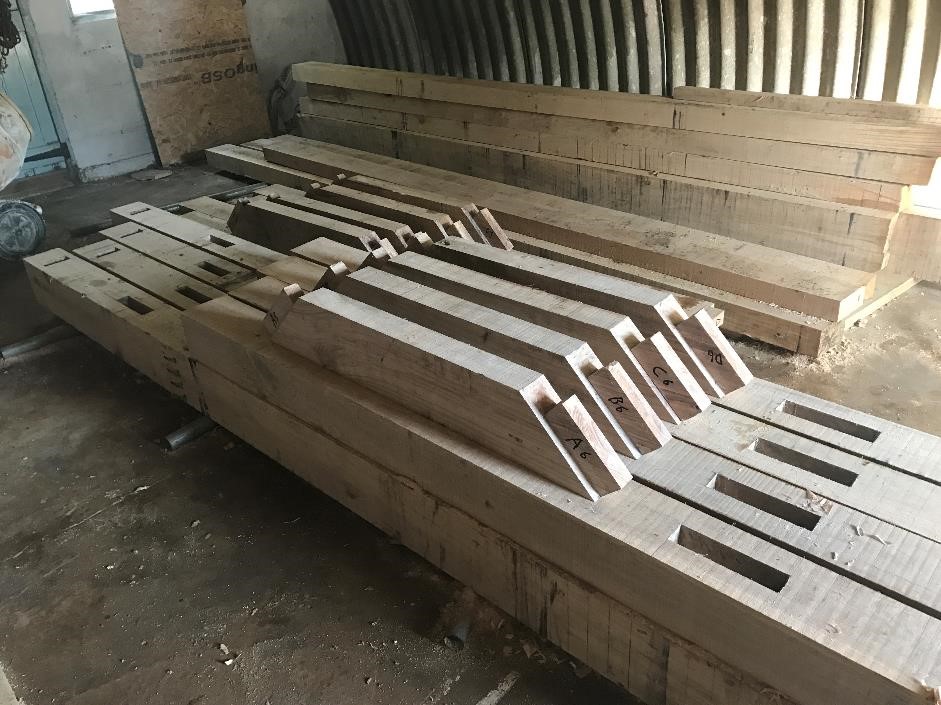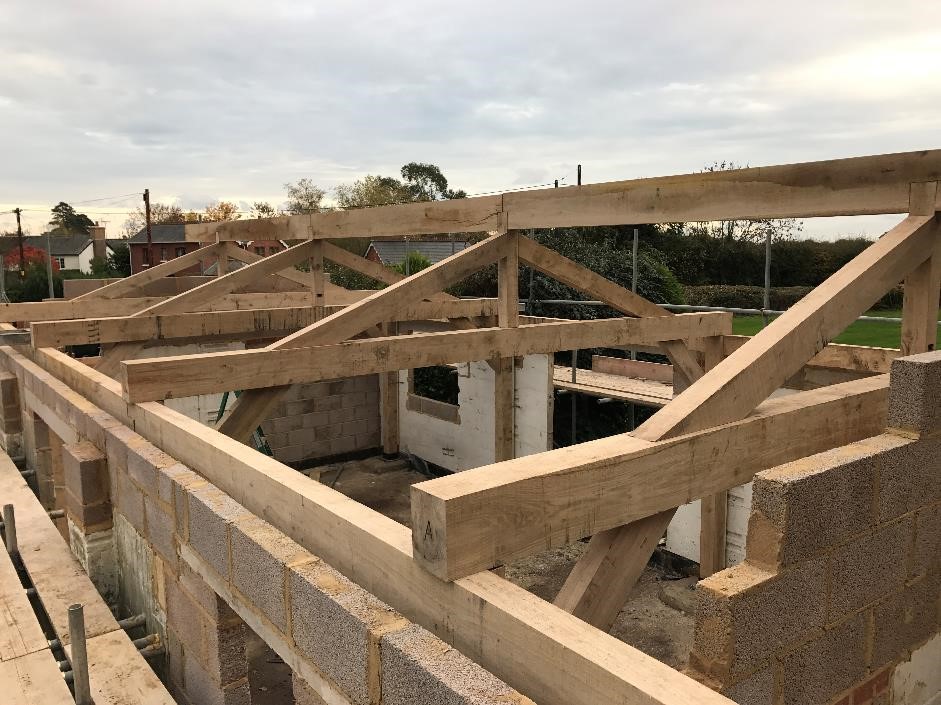Cob House - Building Projects
Fordingbridge
We were fortunate to be asked to work on a 17th Century clay cob cottage in the New Forest. The building had been uninhabited for a number of years and had suffered from many modern incompatible interventions during the last Century. The project had a number of phases to it, namely:
Renovation of the original cob cottage
Externally the cottage had been rendered in a pebble dash concrete render and subsequently painted with masonry paint, all of which were hindering the drying of the walls. Internally much of the original lime plaster had been skimmed in gypsum and again painted in modern paints. We therefore stripped the internal and external finishes from the walls and replaced them with breathable lime plaster/render. This allowed us also to bring back some of the beautiful shape of the cob walls where previously they had been flattened and squared.
Installation of a limecrete floor, underfloor heating and a ground source heat pump
When renovating cob houses from scratch, one has the option of introducing a more modern, environmentally friendly, heating system which the client was very keen to do. Underfloor heating can work well with older properties as it maintains a more constant temperature within the house and if installed correctly, it can be a more energy efficient heat.
The problem with underfloor heating is that it needs to be installed on an insulated floor in a screed. Modern screeds are by their nature, impermeable and therefore force more moisture to the walls. This isn’t desirable in old properties. The alternative is therefore to install a moisture permeable insulation below a limecrete screed, within which the underfloor heating is laid. In this case the existing suspended timber floor meant that no additional lowering of the ground levels was needed and we installed a limecrete floor throughout the cottage.
Taking advantage of the government incentives, a ground source heat pump was installed that now supplies the heating and hot water for the cottage. Financially, the outlay will be recovered over the life of the system.
Renovation of a late 20th Century brick extension
The cottage had a very early cavity wall brick extension which presented two notable issues externally and internally. Taking each in turn, the outside of the cottage had many layers of paint which were preventing drying. The desire was to render this brickwork to help tie it in with the rest of the cottage. The paint therefore needed to be removed both to allow breathability and to give a suitable surface for to bond the render. Using specialist paint removal techniques that don’t damage the masonry (such as sand blasting) we took off three layers of paint to leave a base layer which was found to be a cementitious paint often referred to as ‘snowcem’. This presented an issue as it cannot be removed satisfactorily from the face of the brick. We therefore opened up all the mortar joints to create a moisture path and render key and applied a two coat lime render.
Internally, the walls had an uninsulated brickwork cavity. The rooms were noticeably colder than the rest of the house therefore we wanted to improve the walls thermally. There are generally two options for insulating, internally or externally. Due to the visual impact external insulation was discounted therefore we insulated each room internally. To maintain breathability, we used a cork board insulation with a lime backing coat and lime skim coat.
Demolition of an original storage shed and replacement with a modern thatched extension
In conjunction with the works to the main house, we demolished and rebuilt a modern extension to one side of the cottage. Despite being built using more conventional methods we were able to make and install a fabulous timber truss and purlins as well as rendering the elevations to give the extension some real character.
Refurbishment of an outbuilding with the installation of an oak frame
The roof of the outbuilding was inadequate having had water ingress over a period of time which had rotted many of the roof timbers. This therefore needed replacement and as the roof was only supported of a single skin of blockwork it was decided to install an independent oak frame to support the roof. We co-ordinated the design of the oak frame and fabricated it on site in an adjacent building. The frame was then erected by crane in a very balmy October.
